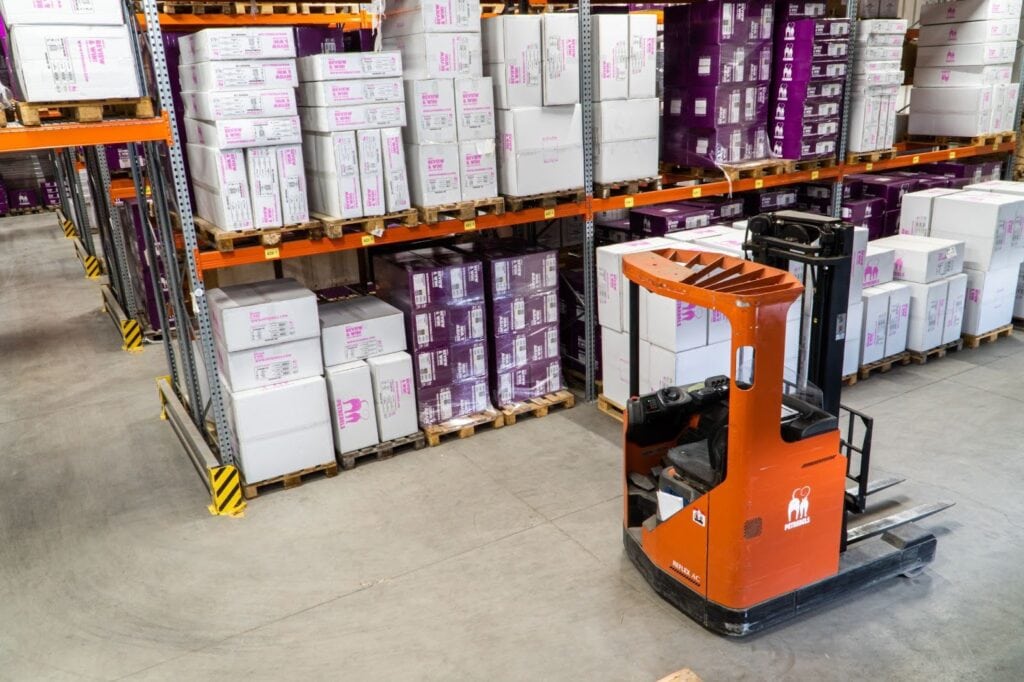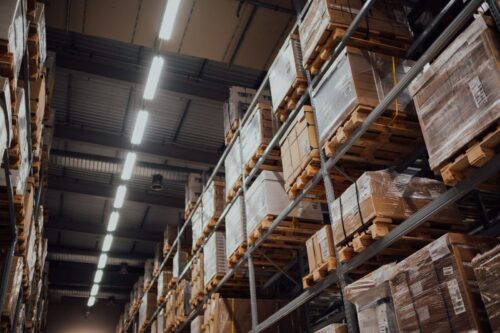Warehouse vs. Inventory: Their Roles And Differences

Understanding the crucial differences between warehouses and inventory is essential for operational excellence in supply chain logistics. This article explores the roles and connections between warehouse capacities and inventory management in enhancing overall supply chain efficiency.
The Role Of A Warehouse
A warehouse is a storage facility that efficiently stores and protects goods until they are needed for distribution or sale. It plays a crucial role in the supply chain by managing inventory, fulfilling orders, and facilitating distribution.
The Role Of Inventory
Inventory, encompassing all goods and materials held by a business for sale or production, plays a pivotal role in maintaining the seamless operation of supply chains across retail, trade, and manufacturing sectors.
Supply Chain: Warehouse And Inventory Management Solutions

Integrating warehouse and inventory management solutions in supply chain optimization is pivotal to maintaining regulatory compliance and ensuring efficient resource allocation.
Addressing labor within these systems requires a strategic approach to workforce quality management, balancing the need for skilled personnel against the potential benefits of automation.
Addressing Labor
The labor shortage remains a major concern in the supply chain industry. To address this, companies are turning to automation, inventory, and warehouse management software, and other technologies to streamline processes and reduce manpower requirements.
Just-In-Case Inventory
Just-in-case inventory allows companies to hold extra stock to meet unexpected demand or supply disruptions. Pros include minimizing stockouts and customer dissatisfaction. Cons include increased storage costs, potential obsolescence, and tying up capital. It’s a balancing act between risk mitigation and cost efficiency.
Implementing Inventory Management With 3PL Solutions

Implementing inventory management through Third-Party Logistics (3PL) solutions can significantly streamline the supply chain process for businesses. 3PL providers specialize in logistics operations, offering expertise and resources many companies may need to have in-house.
Advantages:
- Expertise in Logistics: 3PLs bring specialized knowledge and experience managing complex logistics operations.
- Scalability and Flexibility: They offer scalable services that can be adjusted based on business needs and market demands.
- Geographical Advantages: 3PLs often have strategically located facilities, enabling quicker and more cost-effective distribution.
- Reduced Overhead Costs: Outsourcing logistics can significantly reduce the need for investment in warehouses, transportation, and staff.
- Technology and Infrastructure: 3PLs usually have advanced technology systems for inventory management, offering better visibility and control.
Disadvantages:
- Limited Control: Relying on a third party can lead to less direct control over warehousing and distribution operations.
- Dependency Risks: High reliance on a 3PL provider can be risky if the provider faces operational challenges or discontinues certain services.
- Potential for Misaligned Priorities: The goals and priorities of the 3PL may sometimes align differently with those of the business.
- Communication Challenges: Effective communication and coordination between the company and the 3PL provider are crucial but can sometimes be challenging.
- Cost Considerations: While 3PLs can offer cost savings, the pricing structures can be complex, and there may be hidden costs.
Inventory Software Applications
Inventory management software applications have revolutionized inventory management, making it more efficient. Here are the pros and cons of how software has shaped inventory management:
Pros:
- Enhanced Accuracy: Reduces human error in inventory counts and records.
- Real-Time Tracking: Offers immediate inventory tracking updates on stock levels and movements.
- Efficient Order Management: Automates order processing and fulfillment.
- Data Analytics and Reporting: Provides valuable insights for strategic planning.
Cons:
- Complexity: Can be challenging to set up and integrate with existing systems.
- Cost: Initial investment and ongoing maintenance can be expensive.
- Training and Adaptation: Requires staff training and adaptation to new processes.
- Dependence on Technology: Reliance on software means any technical issues can disrupt operations.
Relevance of Analytics
Analyzing data through forecasting in inventory management aids in anticipating demand, ensuring optimal stock levels, and minimizing waste. Here are the pros and cons of utilizing analytics:
Pros:
- Predictive Planning: Anticipates demand trends, enabling better stock preparation.
- Reduced Stockouts and Overstocking: Balances inventory levels, reducing costs.
- Efficiency in Operations: Streamlines procurement and storage processes.
Cons:
- Data Quality Dependence: Accuracy relies on high-quality data inputs.
- Complexity in Analysis: Requires expertise to interpret and apply insights.
- Potential for Inaccurate Predictions: Market volatility can lead to forecasting errors.
Inventory Spot-Checks
Inventory spot-checks are crucial for accurate data and effective inventory management. These checks validate warehouse inventory management system records against the actual stock. Spot-checks use radio frequency identification to improve transparency and alignment of raw materials and inventory, increasing warehouse efficiency.
Manage And Assess Stock Levels Routinely
Routine stock level assessments are crucial for maintaining inventory accuracy and efficiency. Implementing third-party logistics solutions allows for seamless oversight of storage systems across multiple locations.
How 3PL Improves Inventory Efficiency And Overhead
By utilizing third-party logistics (3PL) providers, small businesses can improve cash flow by enhancing inventory efficiency and reducing overhead costs by outsourcing warehousing and distribution services. This strategic partnership allows for a simpler and broader approach to managing production supply and shipping costs.
Implementing Warehouse Management With 3PL Solutions
Warehouse management systems can be improved by implementing 3PL solutions. These solutions help optimize product placement, reduce handling times, and improve overall logistics. They also ensure compliance with regulations and enhance inventory management efficiency.
Fulfillment Strategies And Filling Methods
Third-party logistics (3PL) companies effectively address inventory and warehouse issues through strategic fulfillment strategies and filling methods. By leveraging their expertise and resources, 3PLs optimize tracking inventory levels, streamline picking and packing processes, and implement efficient storage solutions.
Product Placement Strategy
A 3PL provider’s product placement strategy enhances warehouse management by optimizing the layout for efficient inventory accessibility and workflow. This approach ensures compliance with regulatory standards, maximizes space utilization, and facilitates systematic stock control.
Utilize Cross-Docking
Third-party logistics (3PL) companies employ cross-docking to manage inventory and warehouse issues efficiently. By eliminating the need for storing inventory, products can be directly transferred from incoming shipments to outgoing orders.
It reduces storage costs and improves order fulfillment. 3PLs expertly utilize this strategy for maximum efficiency and customer satisfaction.
How 3PL Improves Warehouse Logistics
Leveraging an advanced warehouse management system, 3PL providers significantly enhance logistics operations by optimizing inventory flow and storage solutions. They meticulously orchestrate the intricate compliance requirements, ensuring a cohesive alignment with regulatory mandates.
3PL Best Strategies To Improve Warehouse And Inventory Management
3PL logistics can greatly enhance warehouse and inventory management by improving processes, optimizing inventory control systems, and ensuring compliance with regulations. However, challenges may arise when integrating 3PL solutions with existing warehouse systems and ensuring alignment with specific business needs and industry standards.
Same-Day Order Fulfillment
Third-party logistics providers greatly enhance same-day order fulfillment by leveraging their expertise and resources. They possess extensive networks, advanced technology, and efficient processes that enable them to handle order processing, warehousing, and transportation seamlessly.
Minimizing Inventory Shrink
Third-party logistics providers reduce inventory shrinkage by offering advanced inventory management systems, accurate demand forecasting, and real-time tracking technology. These solutions improve inventory control, minimize stockouts and overstocking, enhance security measures, and streamline supply chain management, reducing inventory shrinkage.
Optimized Order Fulfillment
Third-party logistics (3PL) improves order fulfillment by optimizing the entire process. With their expertise and resources, 3PL providers streamline inventory management, reduce shipping times, and enhance delivery accuracy.
Benefits Of Optimizing Warehouse And Inventory Management
Robust logistical frameworks and meticulous stock control are imperative for maintaining regulatory compliance and ensuring operational excellence. Mastery of this optimization yields:
- Enhanced inventory accuracy
- Streamlined supply chain processes
- Reduced overhead costs
- Improved customer satisfaction
- Strategic use of 3PL partnerships
- Compliance with industry standards
FAQs
Here are the frequently asked questions about Warehouse and Inventory:
What is the difference between warehouse and inventory?
A warehouse stores goods, while inventory refers to items in stock. Warehouses ensure safety and compliance, while inventory management tracks and controls stock levels.
Is warehouse and inventory management the same?
Warehouse management and store inventory management are related but different. Effective warehouse management involves storing and moving goods efficiently, while inventory management focuses on tracking and maintaining optimal safety stock.
What does inventory mean in a warehouse?
Inventory in a warehouse is the comprehensive list of goods, components, and raw materials stored for use or sale. Managing inventory forecasting is crucial for compliance, efficiency, and profitability.
What is the difference between storage and inventory?
Storage is the physical space for holding goods, while inventory is the stored items. The specific storage location must comply with regulations, while inventory management ensures accurate tracking of the supply chain and improving warehouse operations.
